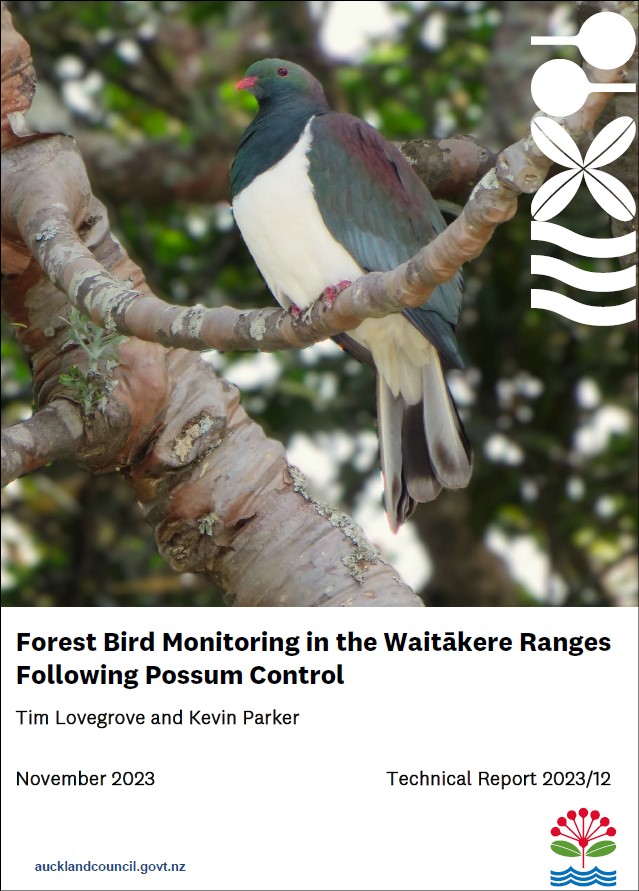Forest bird monitoring in the Waitākere Ranges following possum control
Author:
Tim Lovegrove, Kevin ParkerSource:
Auckland Council, Natural Environment Specialist Services, Environmental ServicesPublication date:
2023Topics:
EnvironmentExecutive summary
A forest health survey in the Waitākere Ranges in 1995 showed declining forest health and significant damage by possums (Trichosurus vulpecula) to palatable tree species. A possum trap-catch survey in 1997 produced a residual trap catch (RTC) index of 24%, indicating a high possum population. In 1997-1998 possums were controlled over the 15,500ha Waitākere Ranges Regional Park and 12,700ha of surrounding mainly privately-owned rural and urban buffer land in a ground-based operation. This reduced the RTC to below 1% by late 1998.
To monitor the impacts of the possum control on bird populations, we carried out five-minute bird counts annually over a 22-year period between 1997-1998 and 2018-2019 at 135 count stations on nine public walking tracks sampling a range of forest types and topographies. To reduce possible effects of observer experience, weather, season and bird conspicuousness on the number of birds counted, we carried out the counts between mid-November and early-January on fine, still days from c.0700-1200 NZST, and all counts were carried out by the same two experienced observers. Total detections of birds increased by 75% from 1997-1998 to 2018-2019 as a result of a significant increase in indigenous birds, while most introduced birds did not increase. In 2018-2019 indigenous birds formed a higher proportion of total birds detected than in 1997-1998. Of the indigenous birds, silvereye (Zosterops lateralis), tūī (Prosthemadera novaeseelandiae), grey warbler (Gerygone igata), and welcome swallow (Hirundo tahitica) increased significantly, the increase in kererū (Hemiphaga novaeseelandiae) approached significance and positive trends were evident in kingfisher (Todiramphus sanctus) and tomtit (Petroica macrocephala); although for tomtit there was a positive trend through to 2009, then detections levelled off until 2014, and declined thereafter. Detections of fantails (Rhipidura fuliginosa) changed very little. Of the introduced birds, blackbirds (Turdus merula) increased significantly and eastern rosellas (Platycercus eximius) showed a positive trend.
We believe that the current level of pest control is insufficient to allow further gains in indigenous bird abundance and diversity in the Waitākere Ranges, because ship rats (Rattus rattus) and other mammalian predators are still present, and in some cases may have benefited from reduced possum numbers. Pest mammal control across the Waitākere Ranges needs to follow a multispecies approach if significant biodiversity gains are to be achieved.
Auckland Council technical report, TR2023/12
November 2023
